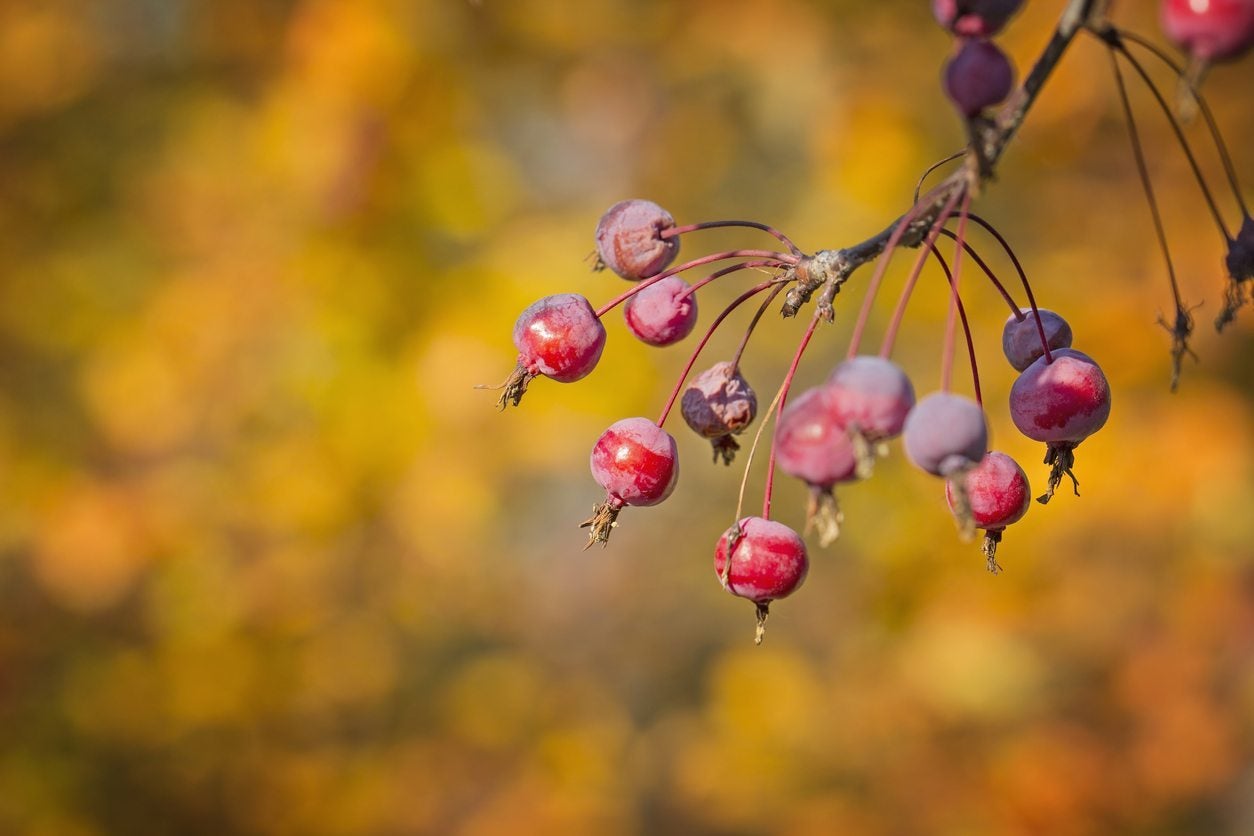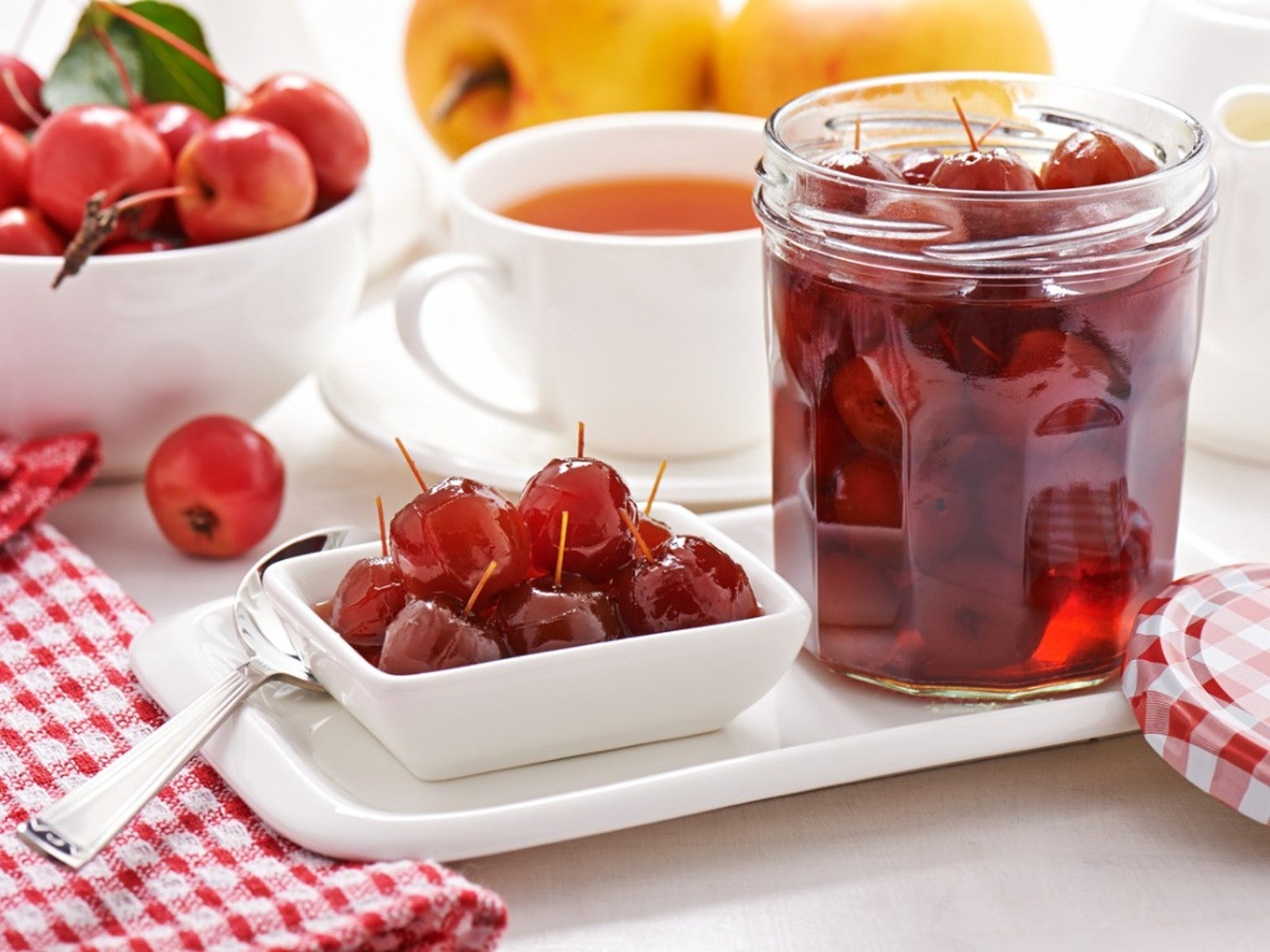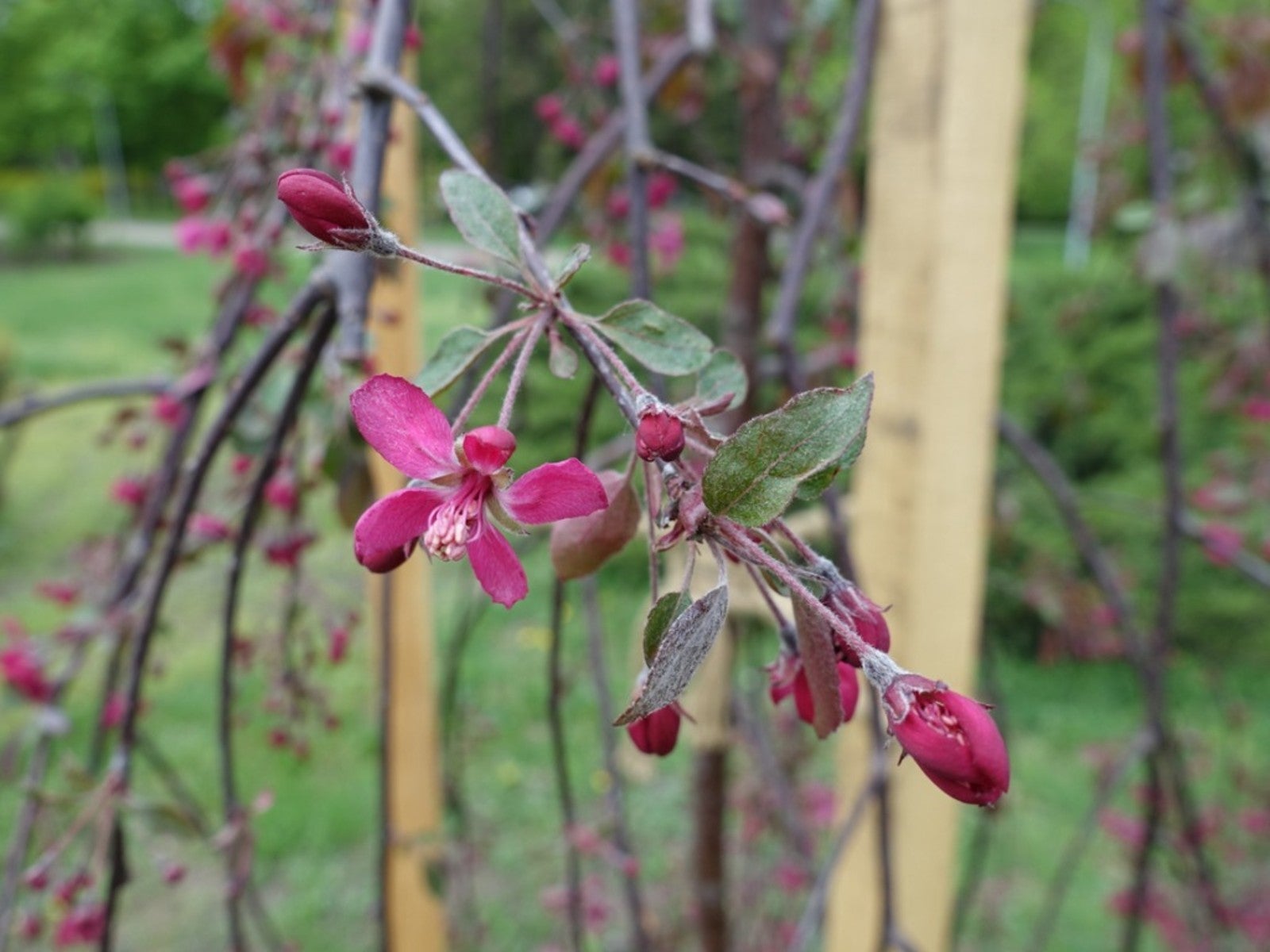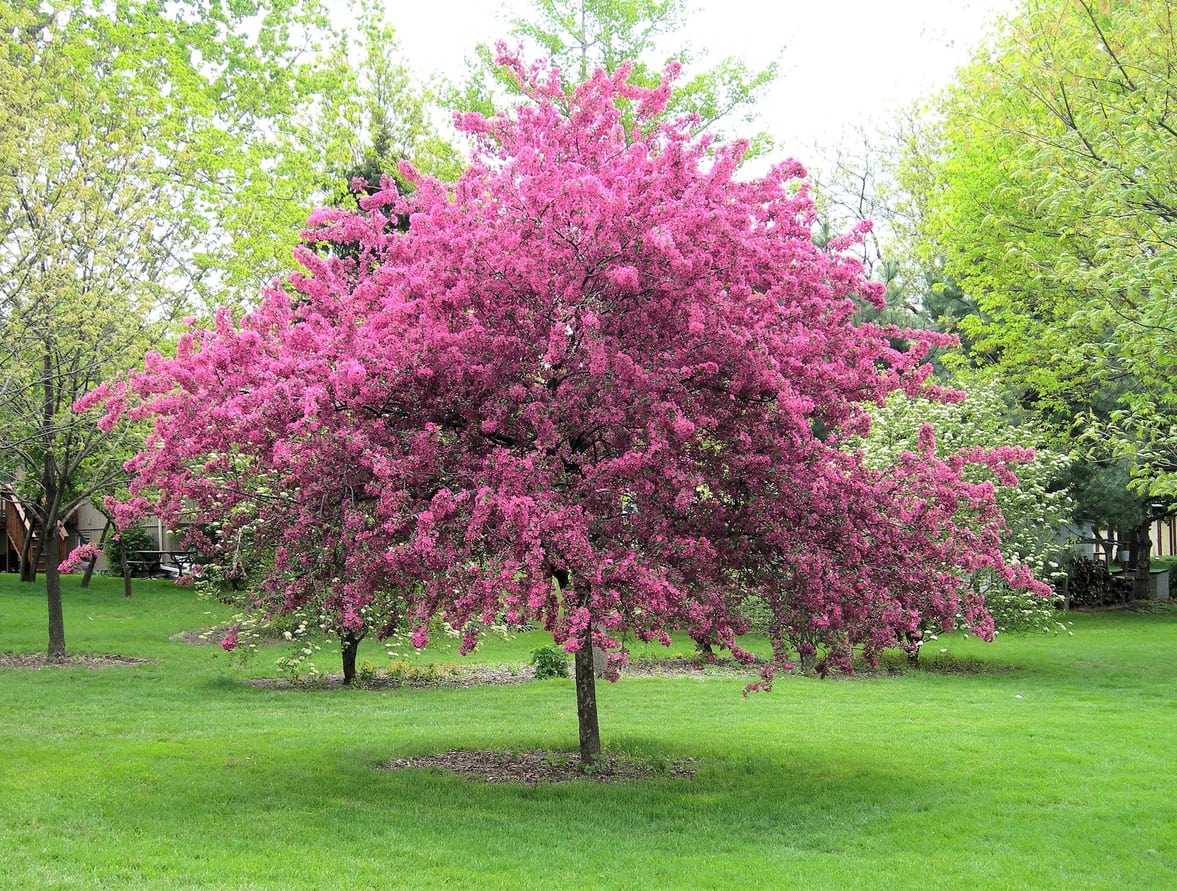Fruit On A Crabapple – Do Crabapple Trees Produce Fruit


Home gardeners usually select crabapple trees to complement the landscape with a compact tree, for flowers, or for pretty foliage, but like other ornamental trees, crabapple fruit will appear in the right season.
Do Crabapple Trees Produce Fruit?
Crabapple trees are great ornamental choices for a variety of settings, and most are hardy across a wide climate range. Most people choose crabapples for their smaller size and for the pretty white or pink flowers that they produce in spring. Of secondary consideration is the fruit on a crabapple tree, but most will produce them. By definition, a crabapple is 2 inches (5 cm.) or less in dimeter, while anything larger is just an apple.
When Do Crabapples Fruit?
The fruit on a crabapple tree can be another layer of ornament in your yard. The flowers are often the first draw for this kind of tree, but crabapple fruit comes in a variety of colors and add visual interest when they form in the fall. The foliage will also turn color, but the fruits often persist long after the leaves come down. Fall fruit colors on crabapples include bright, glossy red, yellow and red, yellow only, orange-red, deep red, and even yellow-green depending on the variety. The fruits will also keep birds coming to your yard for fruit well into late fall. Of course, crabapples aren’t just for the birds to enjoy. Are crabapples edible to humans as well? Yes, they are! While on their own, they may not taste that great, several varieties of crabapple fruit are wonderful for making jams, jellies, pies and the like.
Are There Fruitless Crabapple Trees?
There is a variety of crabapple tree that does not produce fruit. If you like these ornamental trees but aren’t interested in picking up all the rotting apples from underneath them, you can try a ‘Spring Snow,’ ‘Prairie Rose,’ or ‘Marilee’ crabapple. These are unusual for being fruitless crabapple trees, or mostly fruitless anyway. Except for ‘Spring Snow,’ which is sterile; they may produce a few apples. These fruitless varieties are great for walkways and patios, where you don’t want fruit underfoot. Whether you like the idea of crabapple fruits in your garden or not, this compact ornamental tree is a beautiful and flexible option for landscaping. Choose from several varieties to get the flowers and fruit you like best.
Gardening tips, videos, info and more delivered right to your inbox!
Sign up for the Gardening Know How newsletter today and receive a free copy of our e-book "How to Grow Delicious Tomatoes".

Mary Ellen Ellis has been gardening for over 20 years. With degrees in Chemistry and Biology, Mary Ellen's specialties are flowers, native plants, and herbs.
-
 Looking For Plants To Give You The Soft And Fuzzies? Try These 5 Fuzzy Leaf Plant Options
Looking For Plants To Give You The Soft And Fuzzies? Try These 5 Fuzzy Leaf Plant OptionsLovers of texture, drama, silver foliage and tactile plants will adore these special sensory garden additions. These fuzzy leaf plant options will leave you all aglow
By Susan Albert
-
 Get Ready For A Summer Of Hummers! Grow These Full Sun Hummingbird Plants and Flowers
Get Ready For A Summer Of Hummers! Grow These Full Sun Hummingbird Plants and FlowersIf you’re lucky enough to enjoy a sunny backyard, make sure you are maxing out on your pollinator opportunities and grow these full sun hummingbird plants and flowers
By Tonya Barnett
-
 Crabapples Recipe Ideas To Add To Your Thanksgiving Menu
Crabapples Recipe Ideas To Add To Your Thanksgiving MenuCrabapple preserves make a delightfully tart treat. Learn here how to make a simple crabapple jelly.
By Bonnie L. Grant
-
 Weeping Crabapple Pruning – Tips For Trimming A Weeping Crabapple
Weeping Crabapple Pruning – Tips For Trimming A Weeping CrabappleTrimming a weeping crabapple is essential to keeping it healthy and blooming. If you are wondering how to prune a weeping crabapple, read on for info and tips.
By Teo Spengler
-
 Crabapple Feeding Requirements: Learn How To Fertilize A Crabapple Tree
Crabapple Feeding Requirements: Learn How To Fertilize A Crabapple TreeFlowering crabapple is a popular ornamental tree that many people choose for landscaping for the attractive shape, spring flowers, and low-maintenance needs. Despite its hands-off nature, feeding a crabapple may be necessary to promote growth and health. Learn more here.
By Mary Ellen Ellis
-
Ralph Shay Crabapple Care: Growing A Ralph Shay Crabapple Tree
Ralph Shay crabapple trees are mid-sized trees with dark green leaves and an attractive rounded shape. These crabapples are on the large side and are suitable for growing in USDA plant hardiness zones 4 through 8. Click this article to learn more about them.
By Mary H. Dyer
-
 Royal Raindrops Crabapples – Learn About Growing A Royal Raindrops Tree
Royal Raindrops Crabapples – Learn About Growing A Royal Raindrops TreeRoyal Raindrops flowering crabapple is a newer crabapple variety with bold pinkish-red flowers in spring and dark green leaves that turn a bright coppery red in autumn. Interested in growing a royal raindrops tree in your garden? Click here for more information.
By Mary H. Dyer
-
Adams Crabapple As A Pollinizer: Tips For Growing An Adams Crabapple Tree
Beautiful the tree may be, but there is another important reason for growing an Adams crabapple; it is a great choice for pollinating other varieties of apple. Click here to find out how to grow an Adams crabapple and information about Adams crabapple care.
By Amy Grant
-
 Spring Snow Crabapple Care: How To Grow A Spring Snow Crabapple Tree
Spring Snow Crabapple Care: How To Grow A Spring Snow Crabapple TreeIf you are looking for a fruitless crabapple tree, you might want to think about growing "Spring Snow" crabapples. Click on the article that follows for tips on how to grow a "Spring Snow" crabapple and other information.
By Teo Spengler
-
Camzam Apple Info: Learn About Camelot Crabapple Trees
Even if you lack a large garden space, you can still grow one of the many dwarf fruit trees such as the Camelot crabapple tree. Find out how to grow a Camelot crabapple and other Camzam apple info related to Camelot crabapple care in this article.
By Amy Grant